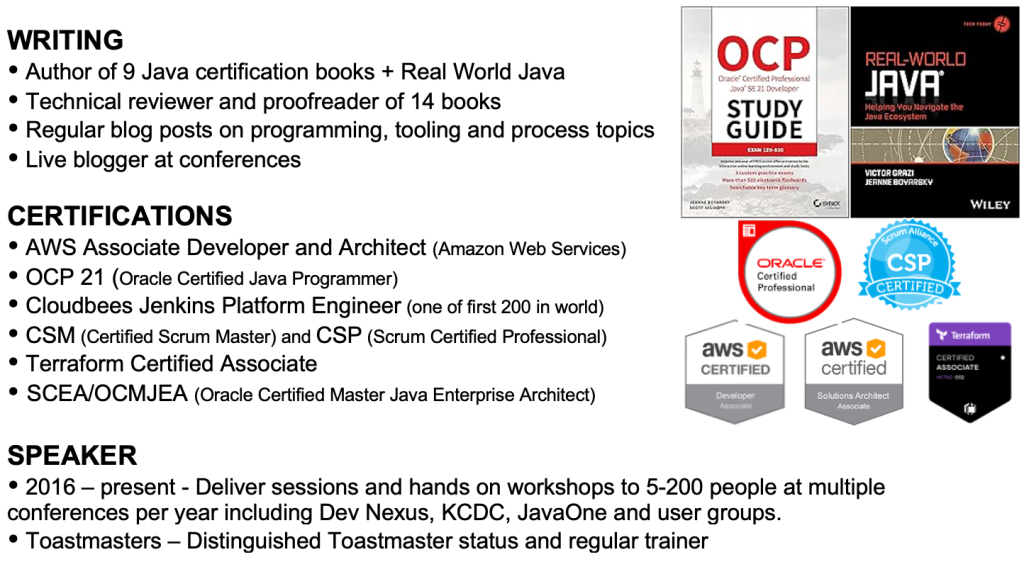Speaker: Stephen Millidge
See the table of contents for more posts
In last 30 years
- More devices – ex: smartphones
- Containers
- K8S
- Cloud
- Elastic Infrastructure
Modernization
- Because Java so successful, a lot of of mission critical applications
- 47% of apps need modernization.
- Wouldn’t call legacy because they are running the business
- Expensive to write from scratch and not a lot of benefit in general
- Goal: Adopt new infrastructure
- How; Lift and Shift
- Why: Scalability and high availability, elasticity, rapid provisioning, software defined infrastructure, cloud migration
- Most monoliths aren’t that big and can put on cloud intact. Don’t have to switch to microservices
Kubernetes
- Helps with complexity of running at scale
- Container Orchestration/Management Platform
- “poor application server”
- Goal: maximize uptime
Challenges for Java Developers
- Context switching from Java code to managing K8S
- Complex setup
- High learning curve
- Steps: upload jar/war, scan for config, compare config values, define config map/secrets, define container/service/pod, launch pod, setup DNS names, configure routing, request SSL cert, integrate/monitoring.
DevOps
- Move Dev and Ops closer together
- “The developers do ops”. Rare for ops person to do development
Platform Engineering
- Offer developer platforms to help teams developer/deploy/manage apps
- Focus on automation, self service and streamlined workflows to improve developer productivity and system reliability
- EU is regulating software – supply chain rules
To create platform
- Can build own
- Buy from technology partner [he’s from Payara and made a comment about it being a vendor talk; I didn’t realize it was]
My take
Fun fact: he took the SCJP 1.0.2. That is a very specific version number.
The room was packed. He needed a bigger room. I wish he had gotten to K8S earlier in the session but was good once he got there. ( I think it was 12 minutes in or so). Then there was another 15 minutes that felt general at which point I stopped paying attention
Overall the session was fine, but it wasn’t what I was expecting.

